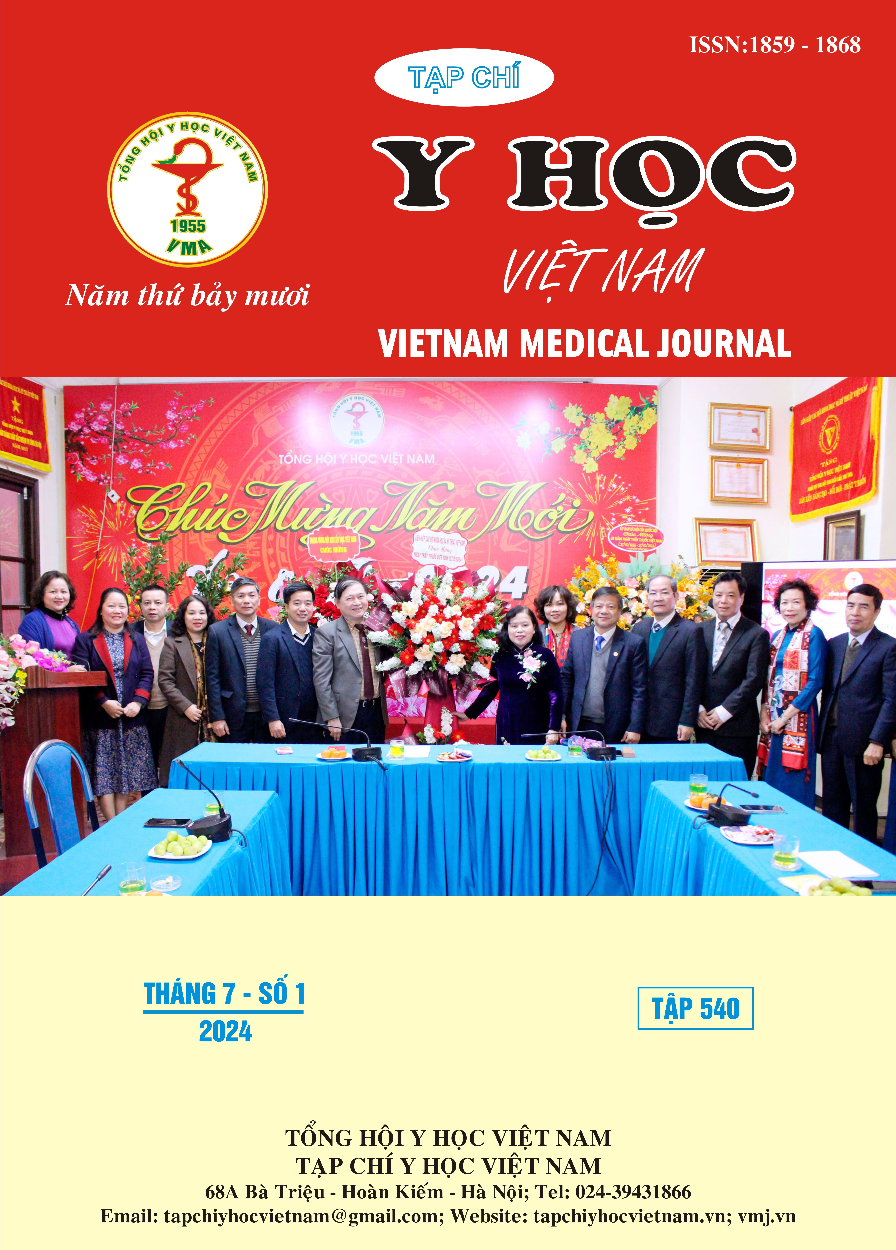EPIDEMIOLOGICAL ANTI-NMDA RECEPTOR ENCEPHALITIS AT NEUROLOGY CENTER OF BACH MAI HOSPITAL IN 2023
Main Article Content
Abstract
Objective: Descriptive epidemiological Anti-NMDA receptor encephalitis at Neurology Center of Bach Mai Hospital in 2023. Subjects: We enrolled 46 patients who were diagnosed with Anti-NMDA receptor encephalitis at Bach Mai Hospital from January 1st 2023 to October 31st, 2023. Methods: Cross-sectional descriptive study. Results: Among the 46 NMDA encephalitis patients studied, the average age was 30.22 ± 14.055, with the percentage of young patients (from 18-44 years old) the highest, accounting for 69.6%. Females predominated over males, with the ratio of males to females was 1/2.07. More than half of the patients came came from the Red River Delta, accounting for 60.9%, while the proportions of them from the Northern Midlands and Mountains, and the North Central region were similar, accounting for nearly 20%. In 2023, the highest incidence rate was in the third quarter (30.4%), and the lowest was in the 4th quarter with an incidence rate of 19.6%. There was no difference in average age between the two genders, and this also happened among regions, and among quarters of the year. There was no statistically significant difference in the gender of target groups in each region. However, the proportion of female patients surpasses that of males in the Red River Delta and North Central region. A difference in gender among NMDA encephalitis patients was found in the third quarter (p<0.05). Conclusion: We have observed that the demographic characteristics of NMDA encephalitis patients at the neurology center in 2023 were similar to those reported in other studies of NMDA encephalitis in Vietnam. These characteristics included a predominance of female patients and a tendency for the condition to affect younger individuals. The highest proportion of patients was found in the Red River Delta region, and the third quarter of 2023 had the highest incidence rate.
Article Details
Keywords
Autoimmune Encephalitis, Anti N-methyl-D-Aspartate receptor, NMDA
References
2. George BP, Schneider EB, Venkatesan A. Encephalitis hospitalization rates and inpatient mortality in the United States, 2000-2010. PLoS One. 2014;9(9): e104169. doi: 10.1371/journal. pone.0104169
3. Granerod J, Crowcroft NS. The epidemiology of acute encephalitis. Neuropsychol Rehabil. Aug-Oct 2007; 17(4-5): 406-28. doi:10.1080/ 09602010600989620
4. Parpia AS, Li Y, Chen C, et al. Encephalitis, Ontario, Canada, 2002-2013. Emerg Infect Dis. Mar 2016; 22(3): 426-32. doi:10.3201/ eid2203.151545
5. Vora NM, Holman RC, Mehal JM, et al. Burden of encephalitis-associated hospitalizations in the United States, 1998-2010. Neurology. Feb 4 2014; 82(5): 443-51. doi: 10.1212/WNL. 0000000000000086
6. Dalmau J, Graus F. Antibody-Mediated Encephalitis. N Engl J Med. Mar 1 2018;378(9): 840-851. doi:10.1056/ NEJMra1708712
7. Vitaliani R, Mason W, Ances B, et al. Paraneoplastic encephalitis, psychiatric symptoms, and hypoventilation in ovarian teratoma. Ann Neurol. Oct 2005; 58(4):594-604. doi: 10.1002/ ana.20614
8. Dalmau J, Gleichman AJ, Hughes EG, et al. Anti-NMDA-receptor encephalitis: case series and analysis of the effects of antibodies. The Lancet Neurology. 2008;7(12): 1091-1098. doi:10.1016/ s1474-4422(08)70224-2


